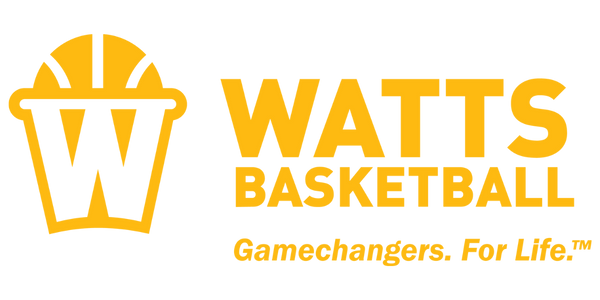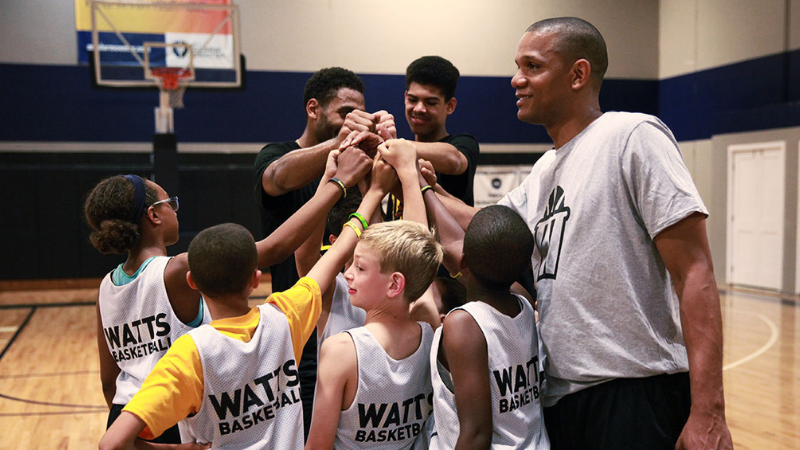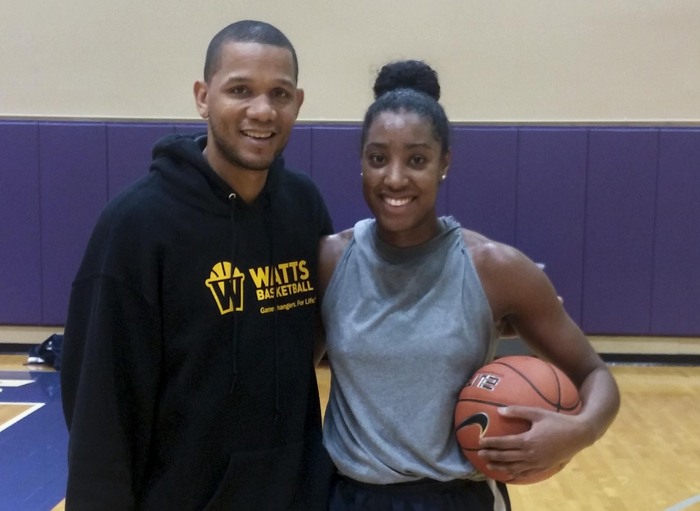By Donald Watts
Basketball has made me the man — the father, son, boss, teammate, and friend — that I am today. More than that, I’ve seen the positive impact that basketball can have on young people of all backgrounds, in every aspect of their lives, including their educations and future careers.
My dad, Slick, and I built our entire basketball camp business on that foundation. We believe that our program can change our students’ games and their lives.
How we coach our student-athletes
We create unique coaching plans for each athlete that comes to one of our camps. Every basketball player’s game is unique: Their style of play is determined by their unique personality, experience, skill, and level and type of athleticism. That’s why my dad, our assistants, and I work with each player differently.

The first time a new athlete comes to a Watts camp, I take the time to get to know them a little bit personally, for a couple reasons. First, we set goals, so the coach and the athlete can hold each other accountable. Second, we develop a relationship of trust, respect, and open communication. This early work helps us teach all of the life lessons I mention here to all of our young athletes.
Lesson 1: How to fall in love with work
Basketball is fun. Basketball is also difficult — so, it can be frustrating. Often, it’s both things at the same time.
That’s why learning how to play basketball is also the perfect way to learn to do hard work. Every basketball player knows the joy of hitting a big shot, or making a stop, or assisting a teammate for a basket. They also know how many times they practiced that stop, and how long they worked on post defense, and how many times they didn’t catch the ball in cutting drills.
Sweet moments can be few and far between if you don’t know how to create them. Putting in hard work is the only way to make that happen. My coaches and I can help kids develop the skills they need to be better at basketball.
While our student-athletes are training and building skills, we remind them why. When they realize those skills in scrimmages, we remind them of the hard work they put in. Every time they make those mental connections, our student-athletes gain a greater appreciation of the value of hard work.
Lesson 2: How to build on strengths and correct flaws
Honest self-assessment is critical for growth. We work with all of our players to identify the best parts of their game and areas where they need to improve. More than that, we teach kids the process of finding their own strengths and weaknesses.
Here’s an example: Recently, I was working with a pair of new athletes, two boys. These boys are friends, and one of their favorite things to do together is shoot three-pointers at the playground. The boys try to make the deepest shots they can. Sometimes they take shots from way beyond the three-point line — even at the half-court. They love NBA players like Steph Curry and Klay Thompson — aka the “Splash Brothers” — who are masters of the deep ball and the really, really deep ball.
The two boys came into the camp and made it sound like they were the second coming of the Splash Brothers — but I didn’t see them make any threes during shootaround, even though they jacked up more than a few.
So, I set the boys to take 25 shots at each level of the floor: post, elbow, midrange, and deep. The boys made about 60 percent of their shots in the post, about 40 at the elbow, 30 in mid-range, and only 2 out of 10 — 20 percent — from deep.
We talked about it afterward, and I had the boys add up the number of points they made from each level of the floor — and the boys realized that they weren’t very good three-point shooters, but they were very good at layups and bank shots. Together, we made a plan to improve as midrange and deep shooters and make their finishing at the basket even better.
Lesson 3: How to set goals and achieve them
Some kids come to our camps with the goal of getting a basketball scholarship. That’s an admirable goal, and one we’ve helped dozens of camp alums achieve, but it’s also a years-long process that involves tons of hard work. When I talk to kids about that process, they can be overwhelmed.
So, instead of giving the kids a laundry list of skills they’ll need to be a star at UCLA or Arizona State, we come up with a multi-layered plan that will help them get where they want to go. We talk about the short, middle, and long-term goals that they’ll need to meet.
Then — and this is the most important part — we get down to the nitty-gritty. Mastering any skill — off-hand dribbling, pull-up jumpers, essay writing, or computer coding — requires mastering dozens of smaller skills that make up the larger one. We help break down whatever skills they need to improve to get their game up to college standards, then tell them how to set a goal for each day that they train. We show kids how to achieve small goals on a daily basis and then look back and realize that they have achieved mastery.
Our goal-setting curriculum is, I think, the most valuable life-skill that we teach our kids.
I was hanging out with an athlete who we started working with when he was in middle school. He’s in high school now. We were talking about how he was doing in school, and how he applied the goal-setting process we teach to his education. His grades have steadily improved since middle school when he wasn’t the best student.
He didn’t think he was very smart. Back then, he thought the grades proved it. But over time, as he started applying our goal-setting process to his education, his grades gradually, and then dramatically, started to get better.
“Coach,” he told me, “I’m actually hella smart.”
Lesson 4: How to be creative
Creativity doesn’t just appear out of thin air: Prince didn’t fall out of bed when he was 16 and write “Purple Rain.” He had to learn how to play guitar and write songs first. You can hear the potential for that song on his earlier albums, but he got better with time and experience. That seems obvious when it’s spelled out, but try telling that to a teenager.
Real creativity requires mastery. Creativity is the end goal of all the skill-building I’ve been going on about. Knowing how to shoot a pull-up jumper is great and all, but it doesn’t matter unless you know how to do it in the middle of the game.
We teach our kids how to think above the court. That means that we want them to know how to get to the spot on the floor where they’re best at shooting a pull-up jumper, manipulate their defender into giving them the space to create their shot, and then execute the shot with perfect form and have the ball swish through the net. We want them to do all of this without thinking.
That process sounds complicated — and it is! But when you’ve mastered each individual skill needed to create that perfect pull-up jumper — ball handling, footwork, head fakes, court vision, and shooting — performing the action is second nature. Your mind has an intuition of what it wants to do, and your body just does it. There isn’t any thought to it — instead, you’re thinking of the score, the next play, and who needs to get the ball on the next possession.
That’s the level of mastery we want to teach to our kids. After all, basketball is about creativity and joy. Our kids work hard to get better — but after they do, and while they’re working, they’ll have more fun than they ever thought possible.
Who we are
My dad and I have developed a unique curriculum that draws on our many years of coaching and our own accomplished playing careers. I led my University of Washington squad to the NCAA Sweet 16, and I was on a path to the NBA until my career was altered by disability.
My dad starred at Xavier University. After, he was a key player on the Sonics teams that reached consecutive NBA Finals. He became the first NBA player to lead the league in steals and assists in the same season. After his pro career ended, my dad settled again in Seattle and began coaching youth basketball.


